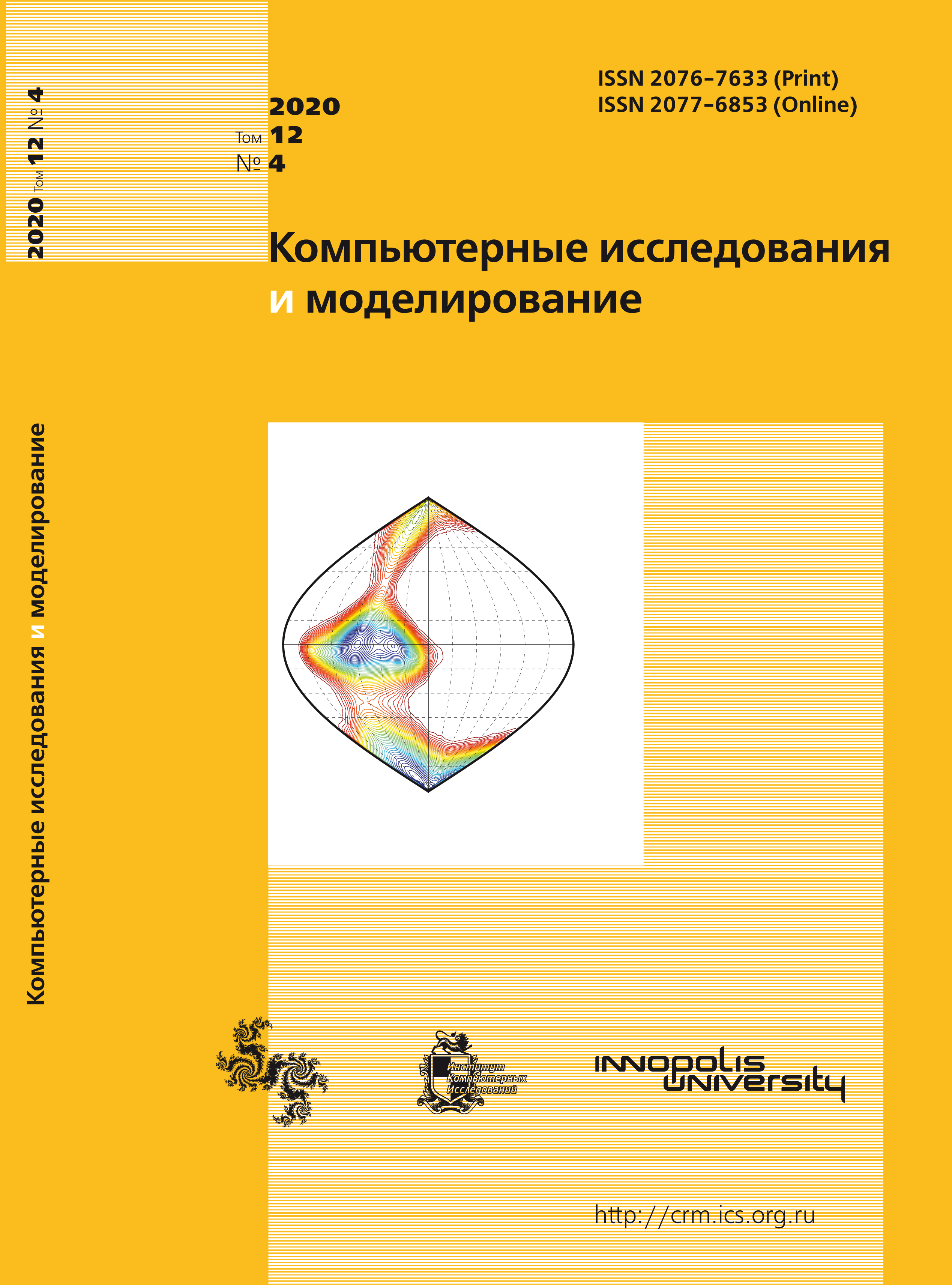All issues
- 2025 Vol. 17
- 2024 Vol. 16
- 2023 Vol. 15
- 2022 Vol. 14
- 2021 Vol. 13
- 2020 Vol. 12
- 2019 Vol. 11
- 2018 Vol. 10
- 2017 Vol. 9
- 2016 Vol. 8
- 2015 Vol. 7
- 2014 Vol. 6
- 2013 Vol. 5
- 2012 Vol. 4
- 2011 Vol. 3
- 2010 Vol. 2
- 2009 Vol. 1
Population waves and their bifurcations in a model “active predator – passive prey”
 pdf (2476K)
pdf (2476K)
Our purpose is to study the spatio-temporal population wave behavior observed in the predator-prey system. It is assumed that predators move both directionally and randomly, and prey spread only diffusely. The model does not take into account demographic processes in the predator population; it’s total number is constant and is a parameter. The variables of the model are the prey and predator densities and the predator speed, which are connected by a system of three reaction – diffusion – advection equations. The system is considered on an annular range, that is the periodic conditions are set at the boundaries of the interval. We have studied the bifurcations of wave modes arising in the system when two parameters are changed — the total number of predators and their taxis acceleration coefficient.
The main research method is a numerical analysis. The spatial approximation of the problem in partial derivatives is performed by the finite difference method. Integration of the obtained system of ordinary differential equations in time is carried out by the Runge –Kutta method. The construction of the Poincare map, calculation of Lyapunov exponents, and Fourier analysis are used for a qualitative analysis of dynamic regimes.
It is shown that, population waves can arise as a result of existence of directional movement of predators. The population dynamics in the system changes qualitatively as the total predator number increases. А stationary homogeneous regime is stable at low value of parameter, then it is replaced by self-oscillations in the form of traveling waves. The waveform becomes more complicated as the bifurcation parameter increases; its complexity occurs due to an increase in the number of temporal vibrational modes. A large taxis acceleration coefficient leads to the possibility of a transition from multi-frequency to chaotic and hyperchaotic population waves. A stationary regime without preys becomes stable with a large number of predators.
Copyright © 2020 Govorukhin V.N., Zagrebneva A.D.
Indexed in Scopus
Full-text version of the journal is also available on the web site of the scientific electronic library eLIBRARY.RU
The journal is included in the Russian Science Citation Index
The journal is included in the RSCI
International Interdisciplinary Conference "Mathematics. Computing. Education"






